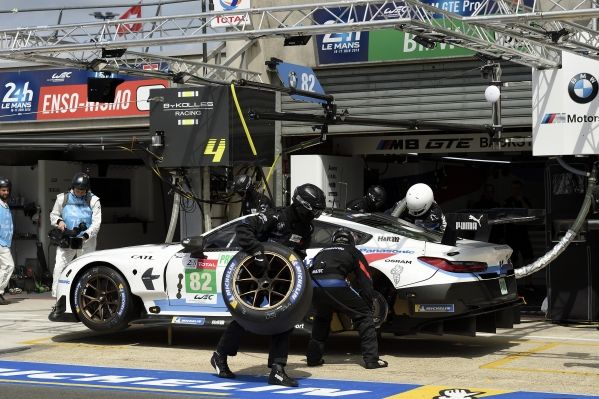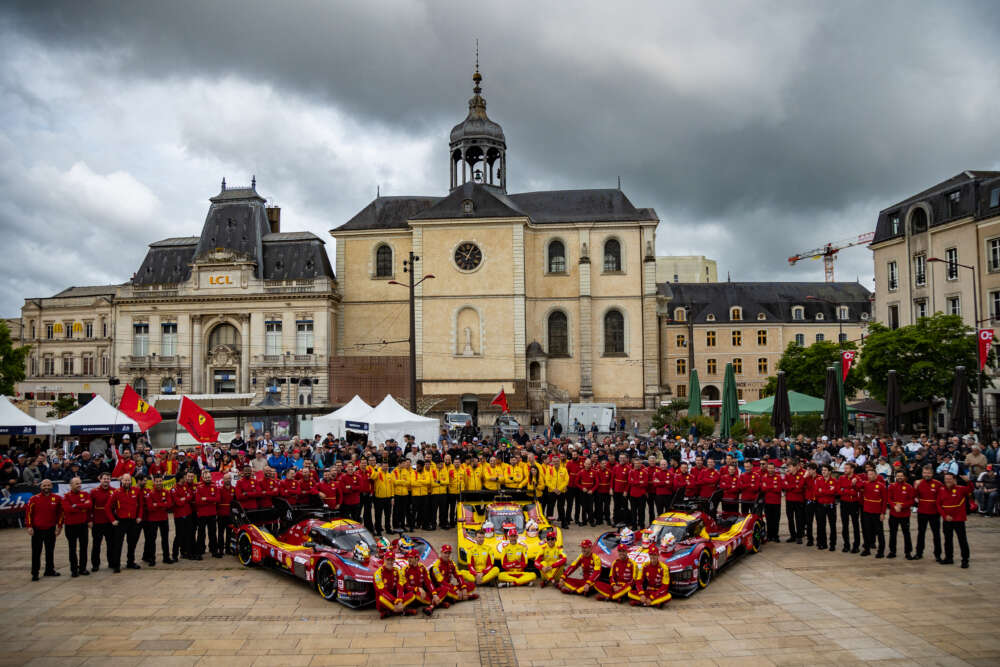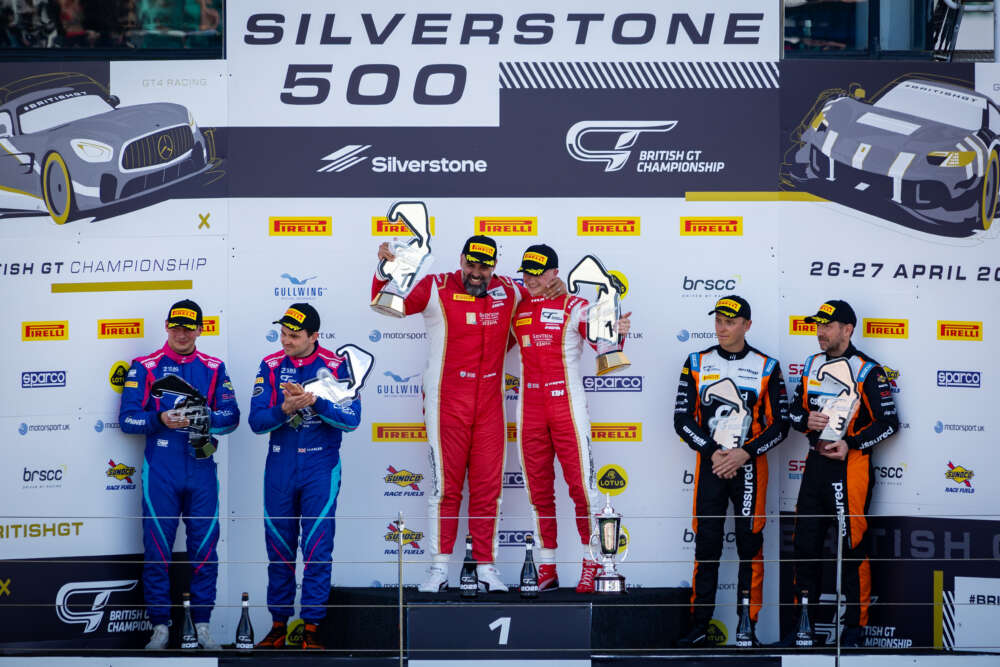
Perfect pit stops are important for success in every race series. While it will be primarily about the speed of changing tyres at next weekend’s DTM races in Brands Hatch (GBR), in endurance races such as the 24 Hours of Spa-Francorchamps (BEL), it’s the right timing and coordination of the different procedures that is crucial. In addition to changing the tyres, the car is refuelled and a new driver enters the cockpit. We provide an overview of the pit stops in the various race series in which BMW M Motorsport is involved and compare the stops at the upcoming DTM races with those in the FIA WEC, the IMSA series and at the Spa-Francorchamps 24 Hours. DTM: Key Facts: Team/car: BMW Team RBM / BMW M4 DTM
Duration: Approx. 7 seconds stationary, no refuelling allowed
Persons: 9 team members directly on the car, plus one person at the pit wall manning pit board, one person on the team radio and the leader of the stop
Procedure: Decide to stop, use the pit board to show the driver and confirm via radio, radio signal to the pit crew, instruct the driver on the change position, after braking, lift the car using the pneumatic jack and loosen front tyres, change the front tyres, mechanics run to the rear, change the rear tyres, all-clear handsign of gunmen, release the car, drive off and check the traffic in the pit lane via radio andr the lollipop man
Speed limit: 60 km/h (Norisring, Zandvoort, and Brands Hatch 50 km/h)
The Challenge: The pit stops in the DTM are a great mental and physical strain for the whole team, as they can decide the race in the balanced starting field so good preparation and constant pit stop practice is standard procedure for all team members. For the drivers, it is important to get the cool tyres (regulations no longer allow preheating) up to the correct temperature as quickly as possible after returning to the track.
Driver Perspective – Philipp Eng (AUT): “The pit stop is of great significance in the DTM. The level of performance in the DTM is very high, which is why the pit crew is important. You always win and lose together. It is important that you brake as late as possible before the pit stop line and don’t waste any time. You can’t drive too fast when turning off the ‘fast lane’ to your spot because you need to stop exactly at the lollipop. When the car is in the air and the guys are changing the tyres, you can tell whether it is a fast or slow stop. When they run to the rear axle, I look in the rear-view mirror to make sure that no other car is entering the ‘fast lane’. Then, when the car is lowered, that’s my cue to put my foot on the accelerator.”
FIA World Endurance Championship: Team/car: BMW Team MTEK / BMW M8 GTE
Duration: Approx. 35 seconds stationary (depending on the volume refuelled)
Persons: 8 team members at the car (4 mechanics, 1 lollipop man, 2 refuellers, 1 fire extinguisher)
Procedure: Refuel, tyre change and check at the same time, parallel driver change, where applicable
Speed limit: 60 km/h
The Challenge: The consistency of the pit stops throughout the entire endurance race and the perfect communication between driver, pit crew and engineers, particularly in the case of unplanned stops, are crucial. Then on top of that is the challenge of changing brakes in a 24-hour race.
Driver Perspective – António Félix da Costa (POR): “Pit stops in the FIA WEC are a real challenge because we need to change the drivers more quickly than the 35 seconds that it takes to refuel. Getting out, getting in, and in particular, the new driver buckling up properly and securely in 25 seconds is far from easy. Training for these procedures is one of our most important tasks ahead of the race.”
IMSA WeatherTech SportsCar Championship: Team/car: BMW Team RLL / BMW M8 GTE
Duration: 34 seconds, as per regulations, for full refuelling, not limited when fuel quantity is lower, tyre change 16 seconds, driver change 20 seconds
Persons: 4 team members at the car (3 tyre changers, 1 refueller), plus the second driver, who helps with getting in and buckling up
Procedure: Refuel, change tyres and check at the same time, parallel driver change, where applicable, start the car after tyre change, during refuelling
Speed limit: 60 km/h (37 mph)
The Challenge: In contrast with all the European race series, there is a pit wall in the USA, which everyone involved in the pit stop has to jump over before springing into action. The main factor is the consistency and safety of pit stops in line with prior planning. Which is why the team practices pit stops and procedures in every session, and all team members work on their physical fitness.
Driver Perspective – Connor De Phillippi (USA): “It seems like everything all around you is running in slow motion because it is so quiet. The engine is off and everyone out there is doing their job. The car goes up super fast, you really feel it in your lower back. The engineer gives the driver and pit crew the information on how much fuel has already been put in and counts down the time. Then, at the end, the mechanic at the front right of the car removes the air hose and the car drops very quickly. It’s almost like being on a roller coaster. Then the adrenaline kicks back in.”
24 Hours of Spa-Francorchamps (Blancpain GT Series): Key Facts: Team/car: ROWE Racing / BMW M6 GT3
Duration: Approx. 35 seconds stationary (depending on the volume refuelled). The organiser defines a minimum duration for the entire pit stop, including entry and exist for each track (in Spa it is 1:50 minutes)
Persons: 8 team members in the pit lane (1 lollipop man,1 windscreen washer, 2 tyre changers, 3 people for refuelling, holding the hose and fire extinguishing, where applicable, 1 brake controller), another 4 mechanics for taking the tyres into the pitlane
Procedure: Refuel, change tyres and check all at the same time, driver change in parallel, where applicable
Speed limit: 50 km/h
The Challenge: Sticking to the predefined minimum pit stop times as closely as possible so that you don’t lose any time, and timing the pit stops in the race to perfection strategically and tactically, for example during yellow flag or safety car periods. This applies to the predefined technical stop between the 10th Driver Perspective – Jens Klingmann (GER): “The challenges of the pit stops at Spa start with the actual pit lane. It is by far the longest pit lane on the racing calendar. Basically, it is two lanes that are linked by a narrow turn. This means it takes a long time to drive through the pit lane, which enables the driver to check everything in advance. When changing drivers, we have quite a bit of time since the refuelling only takes 30 seconds in the pit. Primarily, it is important that the drivers sit perfectly. There is a display in the car to stick to the minimum time from entering the pit lane to exiting as closely as possible.”






















